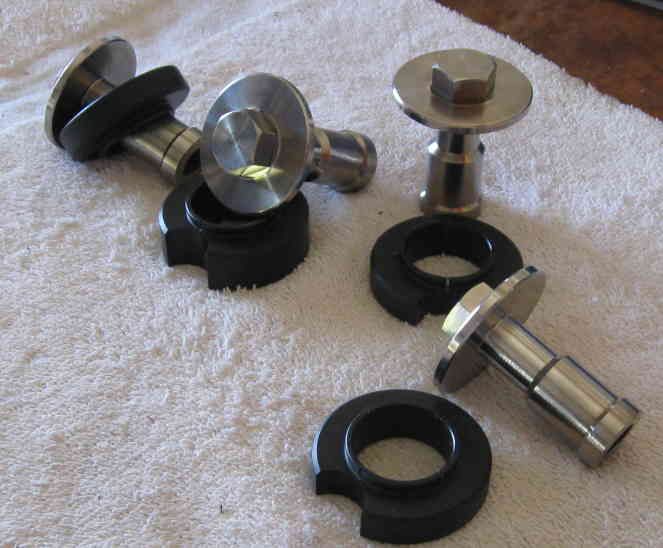dolt
Well-Known Member
there shouldn't be any adjustment that can change the lateral angle between the tranny and the swing arm
Wrong; that is if I read the above statement correctly. Check the service manual and look at Section 2.8, pg. 27-28 and Figures 2.36 and 2.37. We have been referring to power train alignment which is a misnomer; the alignment is actually aligning the chassis with the power train. The two figures referenced above show examples of horizontal and vertical mis-alignment. As you can see the rear wheel position is off center in the swing arm in Figure 2.36 which changes the angle between the trans and swing arm.
oldscoolz said:changing the lateral axis of the drivetrain by adjusting the front motor mount won't change the angle between the tranny pulley and the rear wheel pulley
Correct if your "lateral" axis is the horizontal axis; left-right looking down on the bike. Don't want to get wrapped around the axle on terms; pardon the pun.
oldscoolz said:adjusting the front motor mount is done to change the angle of the rear tire in relation to the front tire.
Wrong again; sort of. Adjusting the front motor mount is done to align the power train with the chassis. Rear wheel alignment should be established before aligning the power train to the chassis by centering the wheel in the swing arm. Once the power train/chassis alignment has been completed and the rear wheel is centered in the swing arm, the rear wheel may not be centered precisely in the fender; don't forget there is very likely a difference. There is an ongoing debate as to whether or not there is an offset, from the factory, between the front and rear wheels on touring models as there is on dynas and softails. Some more experienced than I say there is no factory offset but I can't say for sure. Even if there is, the vertical planes through the wheels can be aligned but not necessarily tracking on the same plane, although the planes should be parallel.
oldscoolz said:the only way i can think of to change the angle between the tranny pulley and the rear wheel pulley is to change the angle of the rear wheel axle.
Correct.
oldscoolz said:dolt, i'm back to you. pulleys are parallel but offset? is this the cause of the abnormal belt wear? my rear wheel sits to the left side of wheel well, like your before you changed it. how do you move the wheel to the center and still have the brake caliper and rotor (and beltguard) aligned properly?
I suppose pulleys could be parallel but offset but not by design. My rear wheel offset was cured by power train/chassis alignment. You cannot move the rear wheel right; the brake caliper and caliper stop pad fix the position of the rear wheel to the right side of the swing arm. However, you can move the rear wheel right by trimming the caliper and/or the caliper stop pad. In the early touring models, the brake caliper can be trimmed by about .100" before making hard contact with the stop pad. If the wheel needs to move more right; the brake caliper stop pad has to be trimmed accordingly.
The near center position of my rear wheel was achieved by aligning wheels first and then aligning the power train to the chassis. I thought I would need to trim the caliper but the alignment got the rear wheel close enough to center that I am happy with it even though, if you look closely, it is not dead center of the fender. I replace the hard rubber donuts and the bit of wobble the bike used to exhibit at say 80-85mph in a long sweeper is gone.
If I were you, I would align wheels (you say you have done that) then align power train to chassis using whatever technique you like but the lasers and digital levels are fairly inexpensive and will get the results. IIRC, I ended up turning about 2.5 turns on the front adjustor and about 1.5 turns on the vertical. Jake's method is good but he assumes that leveling the frame rails gets the fork stem vertical and using a protractor on the front rotor to determine when the front end is pointed straight ahead, 90 degrees on the protractor, aka straight up. I added a second check to verify the front wheel is straight ahead by shooting off both front rotors back to a steel straight edge that is clamped, symmetrically (perpendicular to the backbone)on the frame, this required removing the tank. Down tubes and lower frame rails are not IMHO accurate references, but shooting up at an angle with lasers on the front rotors and measuring in to the frame backbone, taking into account any difference in offset of the left and right rotors from centerline will establish that the front wheel is not only at 90* but pointed straight ahead.
Keep us posted as you proceed.:bigsmiley23:












